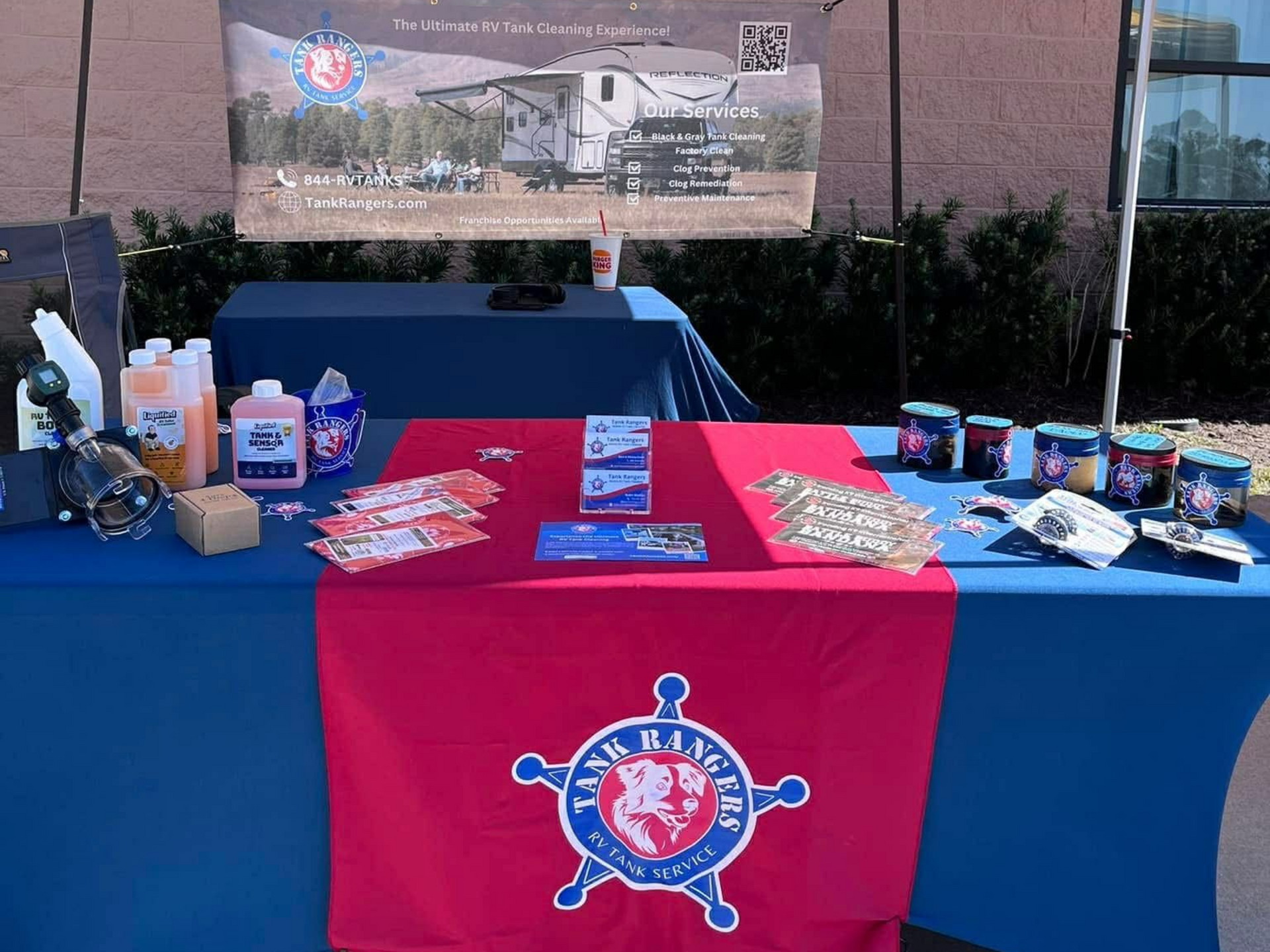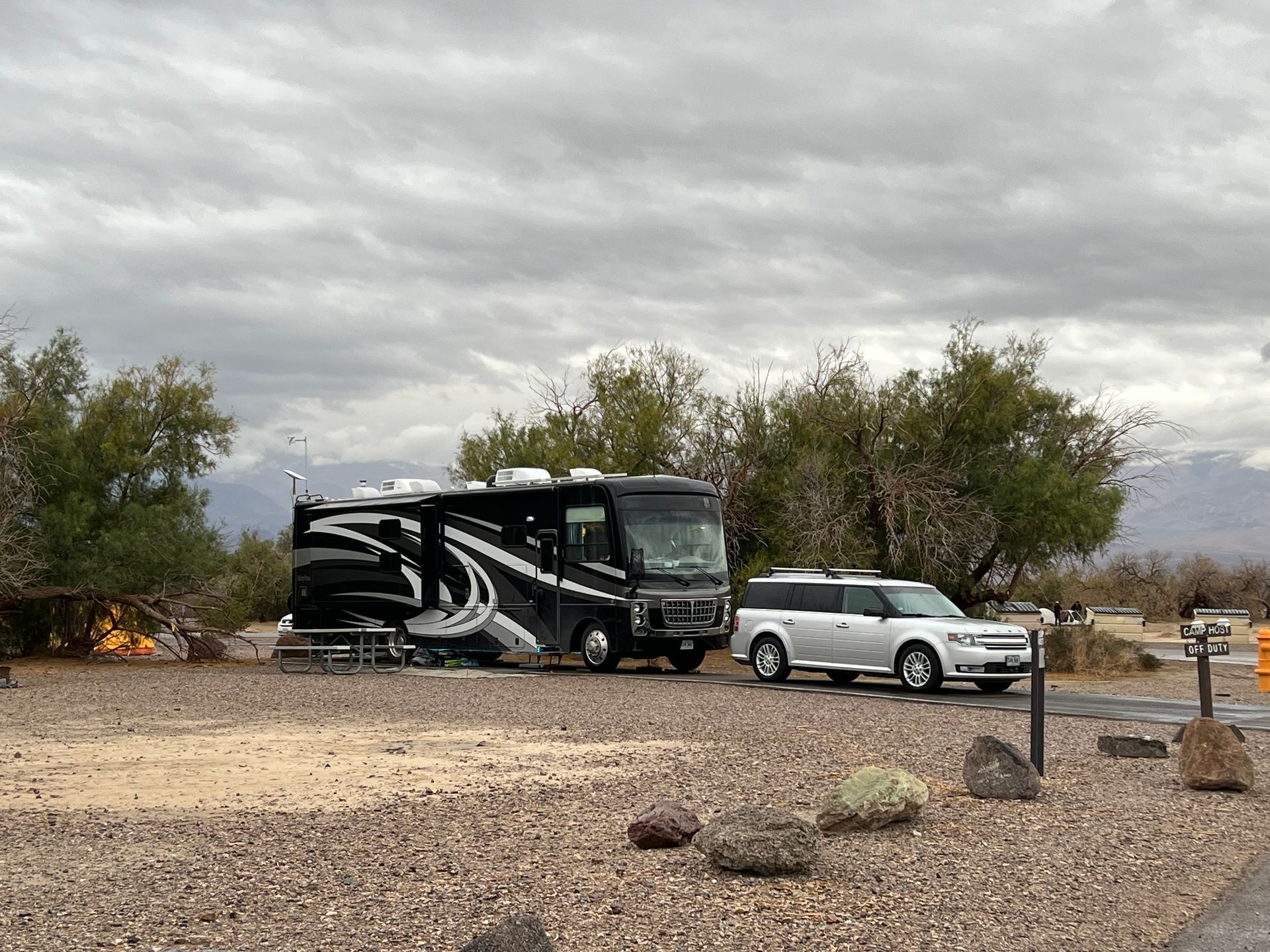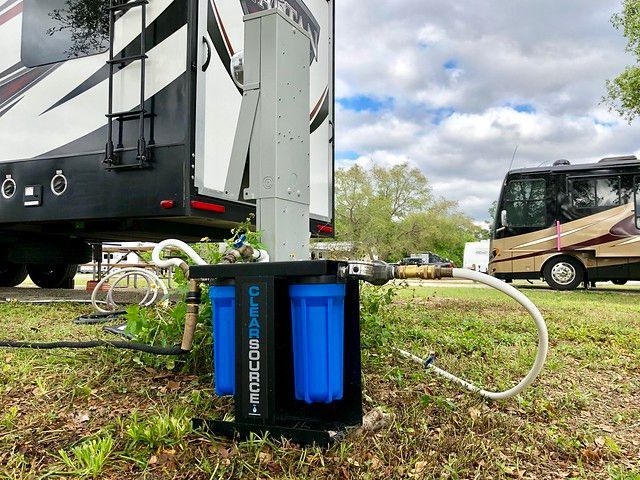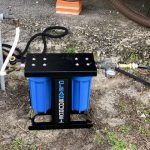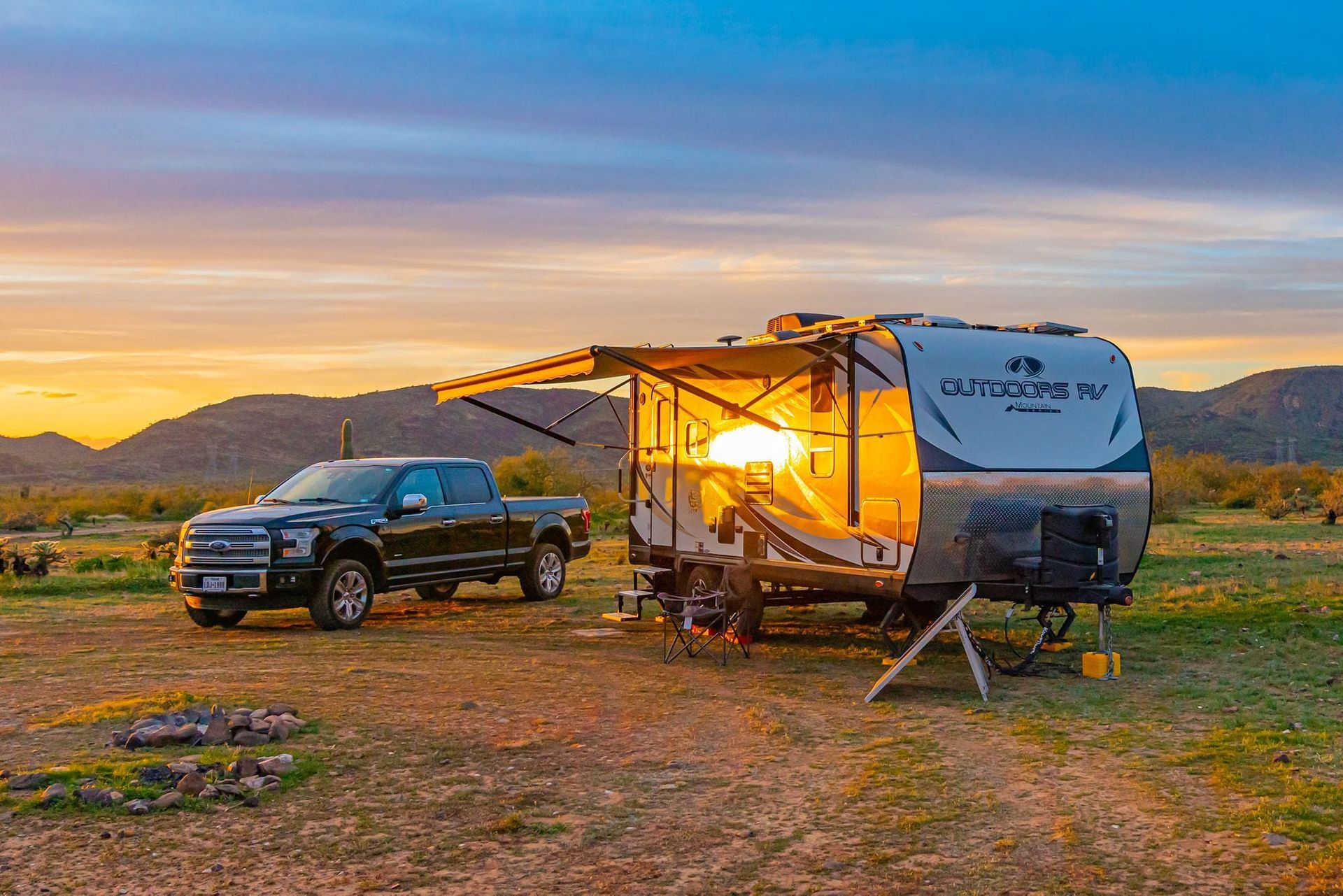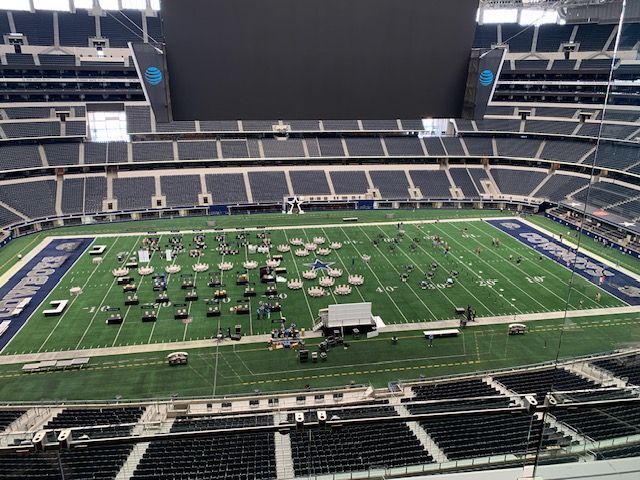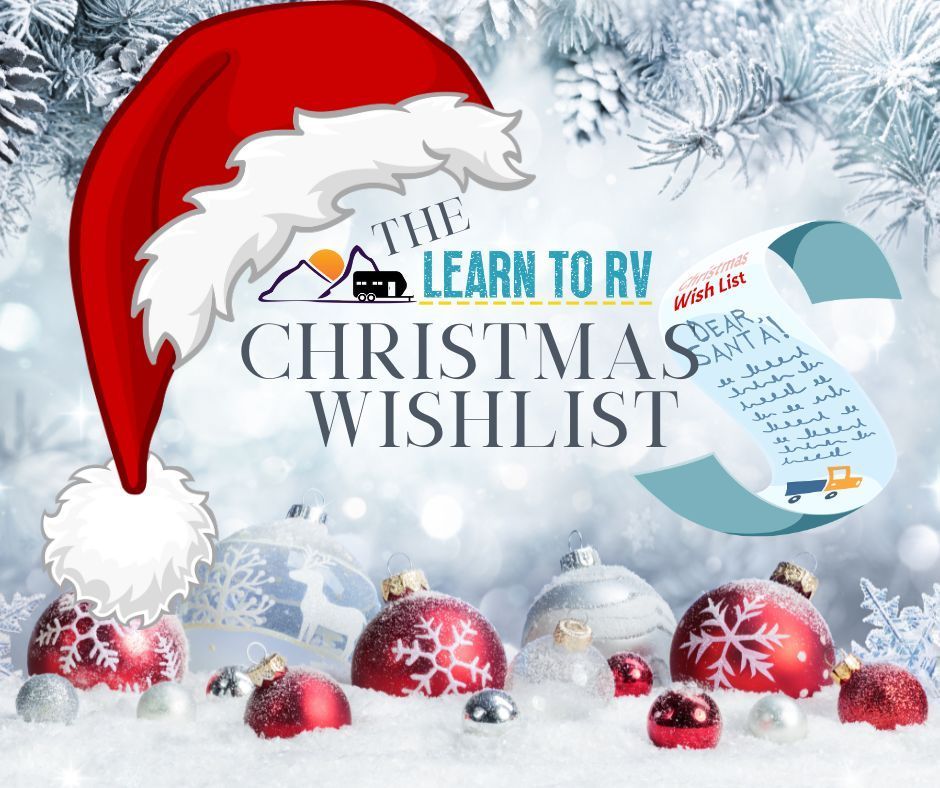Clearsource RV Water Filter Review
Doug S • April 10, 2025
Whether you drink the water from your RV or only use it for brushing teeth and showering, being able to trust the water is important. It’s why sanitizing the system regularly is a big deal. But not letting bad water in is an even bigger deal.
Disclaimer: I received a Clearsource RV water filter in exchange for a review. As I’ve written before, I do my best to remain impartial. I won’t recommend something I don’t use.
There are a variety of filter options on the market. From the inline Camco-style filters to the standalone Berkey Water Filters to whole house filters. Let’s talk about each and their benefits.
Inline Water Hose Filters
The inline water hose filter typically runs about $20 for the Camco version. These are designed to be disposable. The Camco version has plastic hose threads that are fairly easy to strip if you’re moving regularly. The RV Water Filter Store’s version has metal hose connections and is a bit more durable. The downside to these filters is that they often greatly impact the flow of water through the filter. Over the years, I’ve had both and after complaints by my beautiful bride of poor water pressure, both of these got removed at one point or another.
Berkey Water Filters
We LOVE our Berkey. Seriously, LOVE it. So much so that we added a Berkey Shower Head to strip the chlorine from the water. But the Berkey drinking water filter only filters what you put into it and the shower head is limited to just the shower. Sinks are left unfiltered and the rest of the system is susceptible to anything that comes through the campground system. It’s great at what it does, but it isn’t enough.
Whole House Filter
Whole House filters are much like the inline filters that protect the entire water system from the source. They’re designed to be better filters than you’ll find with the inline filters and ones like the Clearsource are designed with larger fittings to allow higher flow rates. Giving you clear clean water and still good pressure for a decent shower!
Clearsource RV Water Filter
So now let’s talk about the Clearsource whole house RV water filter. They offer 2 versions, one that is an external standalone unit and another that is designed to be installed inside of the RV. I didn’t want to muck with any actual plumbing, so I opted for the standalone unit.
What I like about the Clearsource filter is that it’s a readto use package straight out of the box. (Well, except you need a short hose between the campground water supply and the filter.) It comes with a pair of filters:
- 5 micron sediment filter eliminates dirt, salt, sediment and cloudiness
- 0.5 micron coconut shell carbon block second stage filter element
The second filter is the one that matters when you’re drinking nasty central Florida water. Truthfully, for my family, this water is undrinkable straight out of the tap. So my test of secondary filtration is can I consume it? I was quite impressed to say that I could!
Ok, taste isn’t everything. From the Clearwater product page, the “ .5 micron coconut shell carbon block filter dramatically improves taste and smell, and removes contaminants like pesticides, petrochemicals, cryptosporidium, giardia cysts, chlorine, chloramines, and more. “
The external filter housing is bulletproof. It’s built with all stainless steel fittings and a primed/powder-coated metal chassis. You can tell the moment you open the box that this thing is beautiful and is designed for longevity.
The filters are oversized allowing for the high flow that I talked about before.
Note, the Clearsource I have is black. They also offer a Desert (aka tan) color.
Between Trips
If you will be leaving again in a week or two, do nothing. If you will not be using your system for a month or more, unscrew the canisters, empty the water and remove the elements to dry storage. There are fine to dry out and then get wet again.
Filter Replacement Schedule
The filter cartridges are rated to process 2000 gallons of water.
- For the occasional camper, annual replacement is fine.
- For the frequent weekender, we recommend replacing the cartridges twice each year.
- For the full timer, every two to three months.
Replacement filter cartridges are available on Amazon.
Made in the USA
I picked this up from Amazon, but thought it would be good to share:
“Our industry-exclusive stand-alone chassis is built, primered and powder-coated in the USA. We build our systems in the USA as well, with components sourced from a variety of suppliers. Our filter cartridges and canisters come from a California supplier who manufactures in Taiwan.”
– Clearsource
Cons
Overall, I don’t have a whole lot that I’m not happy about. But, nothing is perfect!
For a package at this price that claims to be ready to use right out of the box, I think it should have included an 18″ hose to connect to the campground water supply. A high quality white hose with metal connectors.
The high quality comes with a fairly heft weight (about 25 pounds). It’s even a little heavier if you don’t dump out the water between uses (I’m talking to you, fulltimers!)
And lastly, well the price. It is a healthy investment. But I look at it along the lines of any other quality piece of equipment that I buy (kind of like how people “invest” in Yeti coolers!). The chassis and fittings are built to last!
Other blogs you might like...

